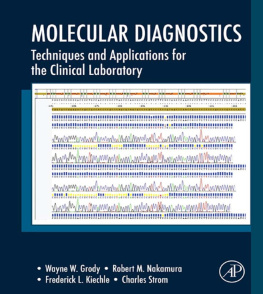Instructions for online access
Thank you for your purchase. Please note that your purchase of this Elsevier eBook also includes access to an online version. Please click here (or go to http://ebooks.elsevier.com) to request an activation code and registration instructions in order to gain access to the web version.
Cellular and Molecular Immunology
Tenth Edition
Abul K. Abbas, MBBS
Professor Emeritus, Department of Pathology, University of California San Francisco, San Francisco, California
Andrew H. Lichtman, MD, PhD
Professor of Pathology, Harvard Medical School, Brigham and Womens Hospital, Boston, Massachusetts
Shiv Pillai, MBBS, PhD
Professor of Medicine and Health Sciences and Technology, Harvard Medical School, Massachusetts General Hospital, Boston, Massachusetts
Table of Contents
Copyright
Elsevier
1600 John F. Kennedy Blvd.
Philadelphia, Pennsylvania 19103-2899
CELLULAR AND MOLECULAR IMMUNOLOGY, TENTH EDITION ISBN: 978-0-323-75748-5
INTERNATIONAL EDITION ISBN: 978-0-323-75749-2
Copyright 2022 by Elsevier Inc. All rights reserved.
Cover image courtesy of Dr. Michael Gerner, University of Washington, Seattle.
No part of this publication may be reproduced or transmitted in any form or by any means, electronic or mechanical, including photocopying, recording, or any information storage and retrieval system, without permission in writing from the publisher. Details on how to seek permission, further information about the Publishers permissions policies and our arrangements with organizations such as the Copyright Clearance Center and the Copyright Licensing Agency, can be found at our website: www.elsevier.com/permissions.
This book and the individual contributions contained in it are protected under copyright by the Publisher (other than as may be noted herein).
Notice
Practitioners and researchers must always rely on their own experience and knowledge in evaluating and using any information, methods, compounds or experiments described herein. Because of rapid advances in the medical sciences, in particular, independent verification of diagnoses and drug dosages should be made. To the fullest extent of the law, no responsibility is assumed by Elsevier, authors, editors or contributors for any injury and/or damage to persons or property as a matter of products liability, negligence or otherwise, or from any use or operation of any methods, products, instructions, or ideas contained in the material herein.
Previous editions copyrighted 2018, 2015, 2012, 2007, 2005, 2003, 2000, 1997, 1994, and 1991.
International Standard Book Number: 978-0-323-75748-5
Publisher: Jeremy Bowes
Director, Content Development: Rebecca Gruliow
Publishing Services Manager: Julie Eddy
Book Production Specialist: Clay Broeker
Design Direction: Ryan Cook
Printed in India
Last digit is the print number: 9 8 7 6 5 4 3 2 1

Dedication
To Our Students, Our Colleagues, and Our Families
Preface
This tenth edition of Cellular and Molecular Immunology includes substantial revisions, reflecting recent scientific advances and clinical applications of the science, while at the same time we have maintained the clear and readable style that has been typical of previous editions. Our presentation of new information focuses primarily on the important concepts and has not significantly increased the length of the book. We have also rewritten many sections for increased clarity, accuracy, and completeness.
The field of immunology has moved beyond establishing fundamental principles of the mechanisms of immune responses to applying these principles to understand and develop therapies for human disease. The revolution in immunological therapies over the last 20 years has been extraordinary. It is especially satisfying for immunologists that some of the most innovative and effective immunotherapies have been developed because the basic science has matured and the complex mechanisms of immune activation and regulation have been elucidated in increasing detail. Nowhere has the link between basic science and clinical medicine been demonstrated more forcefully than in the development of new cancer immunotherapies. Throughout the book, we have paid special attention to the clinical relevance of immunology and the scientific underpinnings of human disease and therapies. As we write this preface, the SARS CoV-2 pandemic has spread throughout the entire world. The science of immunology is of critical importance to the way we confront this challenge, and immunologists are front and center in learning how the virus causes disease, how we can treat it, and how we can develop effective vaccines.
In addition to these translational aspects of immunology, we have also updated basic concepts wherever there has been significant new understanding. Some examples of these fundamental advances include a better understanding of tissue resident macrophages and memory T cell subsets, mechanisms by which inflammasomes and nucleic acid sensors stimulate innate immune responses, the sequences of events in T celldependent antibody responses, and mechanisms by which tumor evasion of immune attack can be overcome
As in previous editions, each chapter is written so that it can be read and understood on its own, without referring to other chapters. To do this, it is often necessary to repeat some basic concepts and general principles that are covered in other chapters. We feel such repetition is valuable because it enables the reader to consolidate learning and understand the content of each chapter independently of the others. We also feel this is helpful for faculty teaching from the book because they can consider each chapter as the topic of one or two lectures.








